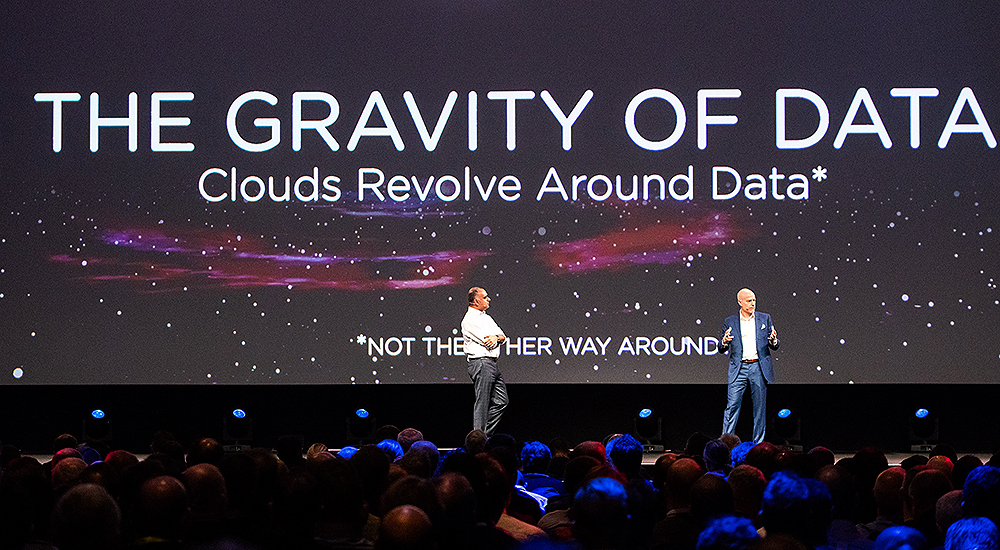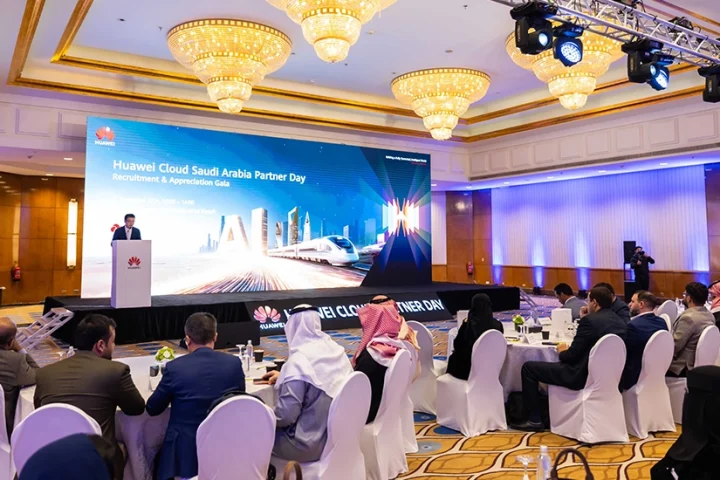Nutanix successfully completed its .NEXT 2018 annual EMEA summit for end users and channel partners in London. The event included key note presentations by Dheeraj Pandey, Co-Founder and CEO, Nutanix; Sunil Potti, Chief Product and Development Officer, Nutanix; Ben Gibson, Chief Marketing Officer, Nutanix; Rajiv Mirani, CTO Cloud Platforms, Nutanix; and Steve Poitras, Principal Solution Architect, Nutanix, amongst others. The event drew attention to various products from the full Nutanix stack of cloud products including Prism, Beam, Xi, Calm, Flow, Era, Leap, Frame, Epoch, Xi IoT.
Dheeraj Pandey, Co-Founder and CEO, Nutanix, delivered a wide ranging key note on many strategic aspects of cloud computing and cloud adoption. Pandey touched on a number of topics including making big things small, atomisation of personal computers, atomisation of enterprise computing, achieving the invisible together, data sovereignty, data gravity, how do you move the cloud to data rather than data to the cloud, and not to be at the mercy of the laws of physics. Laws of physics mean that the edge is more important than the network.
Pandey also presented how Nutanix is enabling real-time analytics and trans-analytics while partnering with Mellanox Technologies and Nvidia, using Nutanix AHV, AOS, Files. He also demonstrated one-click database and time-provisioning as a generic solution for Oracle, SQL Server, MariaDB, using Nutanix Era.
https://youtu.be/0pjn7HBMfy8
https://youtu.be/ToiiqJBYpEY
https://youtu.be/MlGSFQrmyao
https://youtu.be/P7llOuOsxVQ
https://youtu.be/bOCLZ_MndL8
https://youtu.be/gwTf9qM_Nns
https://youtu.be/O-HN6kx-jw8
https://youtu.be/OSDofHzV_4I
https://youtu.be/E22uWkuiJoI
Nutanix’s Chief Product and Development Officer, Sunil Potti pointed out that hyperconverging infrastructure, also termed by Potti as honest hyperconvergence, is giving way to hyperconverging clouds. The innovation around servers, compute, storage, networking, virtualisation also called sheet metal innovation did not involve innovation in software till now. This needs to be applied to software now. When you apply the same logic to hybrid cloud you get a different view of software in a world of multi-cloud.
What is a hybrid cloud? The hard part of hybrid cloud is not in the control pane but in merging data and control together. Clouds have to go where data is, you cannot bring data to clouds. Fundamentally, Potti believes there is a whole set of new opportunities in front of Nutanix. These opportunities exists in the world of multi-clouds, from public clouds, private clouds and also new type of clouds like core clouds, edge clouds, extended clouds, distributed clouds.
The innovation that is required is about converging, control plane and data plane. That is essentially the road map for Nutanix’s enterprise cloud platform. The enterprise cloud does not just mean the private cloud. It means everything that the enterprise connects to independent of location, and independent of form factor.
This journey starting from hyper-converging infrastructure to hyper-converging clouds, is in three phases, abstracted by the solution categories called core, essentials, enterprise. Core starts with hyperconverged infrastructure for the datacentre modernisation, expanding to build a true private cloud. There is no hybrid without actually having at least two clouds. Public clouds exists but a true private cloud still has not manifested in mainstream enterprises. So this still needs to be done. After this, you can expand your horizons to a world of multi-cloud services.
https://youtu.be/UGgtU22DkAc
https://youtu.be/aJxuHNZaf9k
https://youtu.be/9LT0kVKZFWo
Multi cloud orchestration
As organisations focus on wrangling public cloud deployments to gain more visibility into what is being consumed, existing private cloud deployments, including potential cost savings, are often ignored, resulting in an incomplete picture of a company’s enterprise infrastructure. Applications that are more predictable, such as data back-up, databases and enterprise applications can be more cost-effective when operating in private clouds, while less predictable workloads like mobile digital and IoT services can be more suitable for public cloud infrastructure.
Nutanix, announced updates to Beam which extends its cost visibility and optimisation capabilities into on-premises deployments. Beam provides a global multi-cloud view so customers can visualise cloud spend patterns from a single dashboard, making it easier to make decisions which save their business money and ensure compliance with regulations. With these updates, Nutanix customers can get visibility and insight into public and private clouds, so they can choose the right cloud for every application.
Beam will now provide customers with cost visibility into Nutanix software licenses so they can understand the cost associated with their Nutanix private cloud environments, as well as with public cloud deployments on popular cloud platforms. In addition to having complete visibility across the entirety of their public cloud consumption, Nutanix customers will now be able to see how much they are spending on each Nutanix cluster they have set up and get advance notification when they need to add more software based on current consumption trends, all within a single management dashboard. This global view will finally enable customers to manage their entire IT infrastructure environment. Beam for Nutanix on-premises deployments is planned to be available by the end of 2018.
According to a recent survey from IDC, 80% of customers report repatriating workloads from public cloud environments, and the complexity of managing an increasingly disaggregated application portfolio across multiple landing zones is driving a sharper focus on TCO and performance for discrete elements. Adding to existing support for all major public cloud platforms, providing customers with visibility and governance across their public cloud deployments, Beam’s newly added support for cost governance on Nutanix clusters provides:
Cloud governance
CIOs can centrally control consumption across private, public and hybrid clouds, and make decisions on future consumption more efficiently.
Cost optimisation
Beam conducts intelligent analysis of cloud consumption trends to provide a list of the type of product and timeline for future purchases to keep the cloud cost optimised for both private and public clouds
Cost analysis
Customers will be able to see the cost of their Nutanix clusters that have been deployed and cost of software licenses allocated to each cluster.
“Hybrid cloud is no longer considered a brief stopping point in the journey toward an all public cloud future. It is a first-class destination as customers realise they want the complementary benefits of the public and private cloud,” explains Sunil Potti, Chief Product and Development Officer at Nutanix. “For this to be successful, companies need to understand how they are using infrastructure no matter what the platform and from a single view. Nutanix Beam now provides that visibility so customers can make informed decisions about their entire infrastructure.”
Managing the edge
In 2017, 3 billion enterprise IoT edge devices generated up to 30 times more data than the 30+ million nodes across public and private cloud data centers. But the current IoT model in which the massive amounts of data on edge devices is sent back to a centralised cloud for processing has severely limited the ability of customers to make real-time, actionable decisions from intelligence gained at the edge. For customers, deriving value from this massive amount of data is rife with latency issues, lack of scalability, lack of autonomy, and compliance and privacy issues.
To eliminate these shortcomings, Nutanix, announced availability of Xi IoT, a new edge computing service offered as part of the company’s Xi Cloud Services. Unlike traditional IoT models, the Xi IoT platform delivers local compute, machine inference, and data services to perform real-time processing at the edge. Xi IoT Data Pipelines can securely move intelligently analysed data to a customer’s public Azure, AWS or Google Cloud or private cloud platform of choice for long-term analysis.
Since data is processed in real-time at the edge, companies are no longer inhibited by the transmission of data back to a core datacenter for processing, so decisions can be made based on data autonomously and in real-time.
Edge and core cloud deployments all operate on the same data and management plane, so Xi IoT customers have seamless, simplified insight into their deployment. Because Xi IoT provides zero-touch setup and management of edge devices, organisations can eliminate the risk of IoT security breaches due to human error, increase overall efficiency and reduce the cost of operating edge devices across the globe.
Through Xi IoT, customers can manage all their edge locations through an infrastructure and application lifecycle management tool, regardless of platform. It is critical for enterprise organisations to have an edge strategy to unify, edge to cloud connectivity, to rapidly build IoT applications, and to provide real-time analytics closer to where the data is generated.
Since data is processed in real-time at the edge, companies are no longer inhibited by the transmission of data back to a core datacenter for processing, so decisions can be made based on data autonomously and in real-time.
Xi IoT helps IT organisations reduce training, development and testing costs while eliminating the possibility an organisation is locked in to one public cloud provider. Xi IoT eliminates complexity, improves speed of deployment and elevates developers to focus on the business logic. Xi IoT will focus on the manufacturing, retail, oil and gas, healthcare, and smart cities markets at launch.
Cloud services
Nutanix announced availability of Xi Cloud Services, a new suite of offerings designed to create a unified fabric across different cloud environments, that gives IT teams the freedom to run their applications on the optimal platform, not restricted by technology limitations. Xi Cloud Services is comprised of five distinct offerings at launch, including Xi Leap, a native extension of the Nutanix Enterprise Cloud Platform providing disaster recovery as a service.
A seamless hybrid cloud that allows IT to make strategic workload placement decisions is the goal of many businesses. According to Gartner, a multicloud strategy can help a customer gain access to a broader range of capabilities, especially bleeding-edge innovative capabilities. But identifying the best of public and private cloud deployments and knitting them together for a seamless experience is hard, and too often results in siloes of infrastructure spread out across various on-premises and public cloud deployments. This complexity forces companies to experiment with new workloads in public clouds while keeping traditional enterprise applications in the private cloud datacenter, even if those workloads would be more efficient in the public cloud.
“As we move into the multicloud world, a fundamental challenge for all businesses is running IT applications seamlessly across platforms,” added Pandey. “It has been our mission since we were founded to make infrastructure invisible to our customers so they can focus on their applications, not where the applications reside. Xi Cloud Services is the next evolution in that journey as we help our customers achieve invisible, together.”
According to the recent Nutanix Enterprise Cloud Index, enterprise workloads running in both private and public clouds are expected to jump nearly 20% in the next two years. Through Xi Cloud Services, Nutanix makes it easier for companies to integrate cloud services into their multi-cloud deployments, whether by natively extending their Nutanix environment beyond the boundaries of a traditional datacenter or by finally gaining the visibility and insight into their infrastructure deployments across platforms to monitor costs and ensure compliance.
Nutanix Xi Cloud Services is comprised of five distinct services at launch, including Leap, which address the growing challenges of the multicloud era. These services bring together not only the ability to standardise workflows and harmonise operations across environments, but also the ability to blur the lines between clouds, seamlessly utilising applications and data across multiple clouds for a variety of data protection, application delivery and edge locations requirements.
Key takeaways
- Hybrid cloud is no longer considered a stopping point in the journey toward public cloud.
- Companies need to understand how they are using infrastructure no matter what platform and from a single view.
- Beam provides visibility so customers can make informed decisions about their infrastructure.
- Beam will provide customers with cost visibility into Nutanix software licenses.
- Beam can help customers understand costs associated with private cloud, public cloud, other popular cloud platforms.
- Xi IoT platform delivers local compute, machine inference, data services to perform real-time processing at the edge.
- Xi IoT Data Pipelines can securely move analysed data to a customer’s public Azure, AWS, Google Cloud or private cloud platform for long-term analysis.
- Since data is processed in real-time at the edge, companies are no longer inhibited by the transmission of data back to a core datacenter.
























